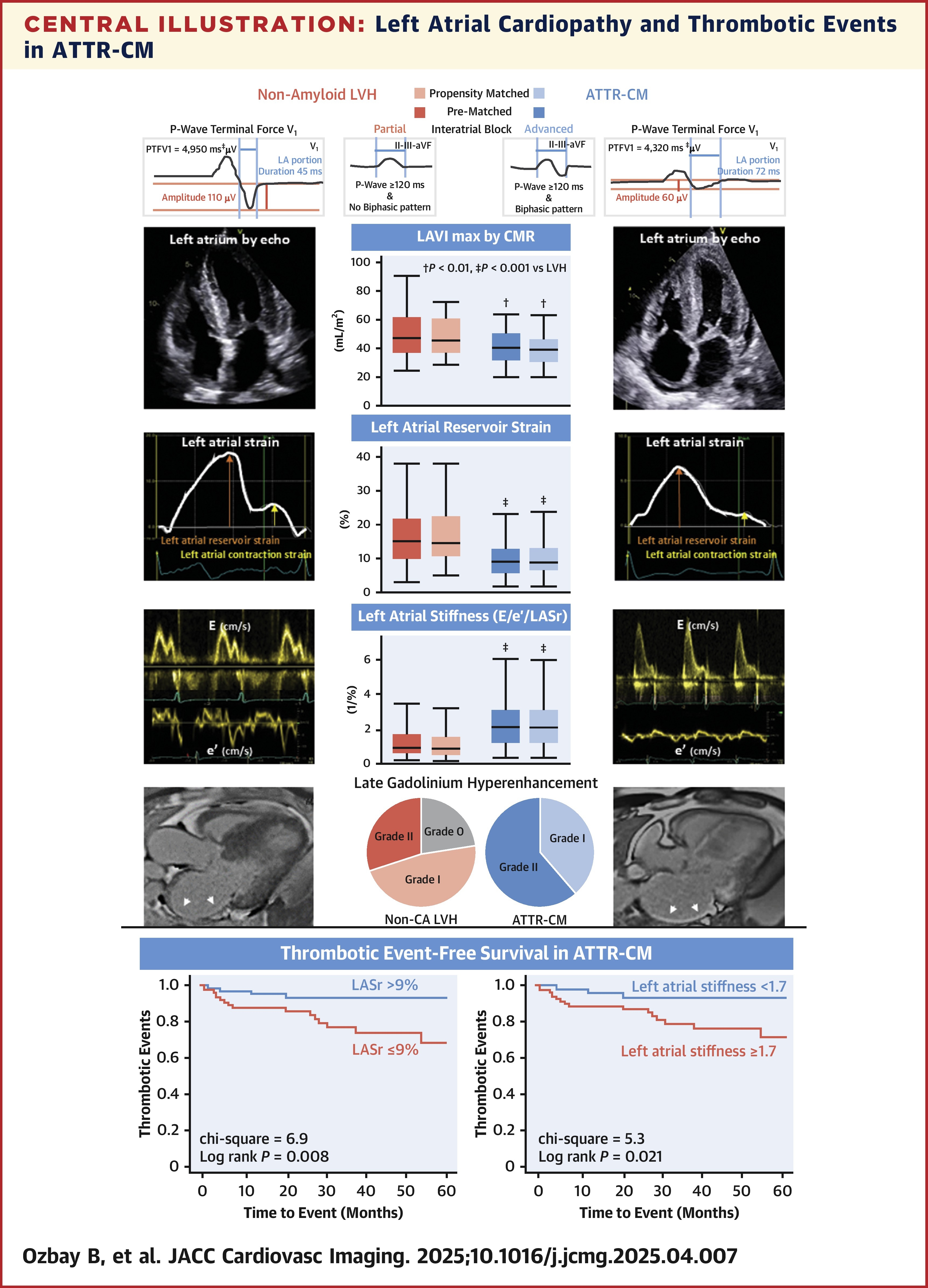Thrombotic Events In ATTR-CM Patients Linked to Primary LA Cardiopathy
Primary left atrial (LA) cardiopathy appears to be linked to the high risk of thrombotic events (TE) in patients with transthyretin amyloid cardiomyopathy (ATTR-CM) independent of atrial fibrillation (AFib), CHA2DS2-VASc score and LA dilatation. This link differs from patients with other left ventricular hypertrophy (LVH) phenotypes according to a new study published in JACC: Cardiovascular Imaging.
In the retrospective study, Benay Ozbay, MD, et al., compared the results of imaging tests in propensity-matched cohorts of ATTR-CM (n=149) and LVH (n=165). Patients were matched for age, sex, coronary artery disease and diabetes, and they had undergone speckle tracking echocardiography, Tc-99m pyrophosphate scintigraphy and serum and urine immunelectrophoresis. Cardiac MR and endomyocardial biopsy were used as clinically indicated.
At the five-year follow-up, results showed that patients with ATTR-CM had decreased left atrial reservoir strain (LASr), smaller LA volume index, more intense late gadolinium hyperenhancement and increased LA stiffness. Additionally, their LASr categorization corresponded poorly with E/e', was depressed regardless of the diastolic dysfunction grade, and did not correlate with the LA volume index.

Among the "novel insights into the distinct aspects of LA cardiopathy in ATTR-CM compared to other LVH phenotypes in association with TEs through multiparametric and multimodality imaging findings," were:
- LA cardiopathy in ATTR-CM is characterized by more severely impaired deformation, more severely increased stiffness, more intense late gadolinium enhancement, and prolonged P-wave despite smaller LA volume compared to other phenotypes of LVH
- LA remodeling is associated with ATTR-CM rather than AFib or diastolic dysfunction unlike other phenotypes of LVH suggestive of ATTR-CM-related primary LA cardiopathy
- LASr and LA stiffness, but not LAVImax, are associated with TEs in patients with ATTR-CM, independent of CHA2DS2-VASc score or AFib.
"To the best of our knowledge, our study is the first to assess the severe mechanical deterioration of the LA out of proportion to dilatation and to show the direct association of intrinsic LA cardiopathy with TE among patients with ATTR-CM," the authors write.
Clinical Topics: Heart Failure and Cardiomyopathies, Noninvasive Imaging, Magnetic Resonance Imaging
Keywords: Amyloid Neuropathies, Familial, Amyloidosis, Magnetic Resonance Imaging, Magnetic Resonance Spectroscopy
< Back to Listings
